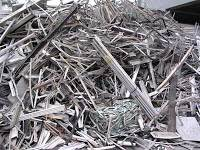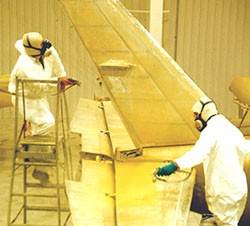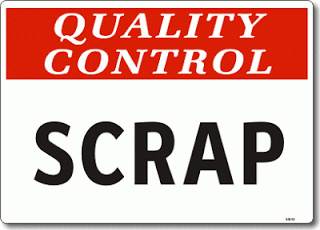
 It can be surprising to see how much scrap and waste is produced in manufacturing.
It can be surprising to see how much scrap and waste is produced in manufacturing.
What is being done to combat this loss?
At a recent conference, I had the chance to talk with people from all over the world. One story stood out among the others, and it involved scrap.
When an airplane is painted it can gain as much as 1000 lbs. Or, for an example, a painted Boeing 747 gains approximately 1200 lbs from just paint. Needless to say, that is a lot of paint. But that isn’t the story I want to share. What blew my mind was the waste involved in getting the paint onto the plane.

We were talking, and he held up his hand as if to hold a bucket, and said that out of each gallon of paint, only 30% ends up on the plane. That, for the mathematically astute, means that 70% ends up on the floor, still in the buckets, on the brushes, on the cover tape, in the tools, and spilled, dried up, or lost somehow in the journey from bucket to plane. He even told me that in order to remove all this extra paint, they had constant water flows in the troughs below the plane! Of course, that is only if you are using 5 gallons per square foot, per day. That is a lot of paint on a large aircraft, and 70% of it is lost in the process.
So then the question arises, not whether to paint the plane or not, as that is a topic for another day, but whether scrap and waste can ever be reduced to zero. Can 100% of the paint ever be put on the plane, and stay there? If there was no scrap at all, wouldn’t that be a good thing?
Not all manufacturers agree. Think about it, in order to reduce scrap to zero, exact amounts of material would need to be delivered, exact tolerances met, and exact yields guaranteed with no defects, mistakes, trials, or unused prototypes. That means the first product you make would have to be perfect. So essentially, zero scrap is a goal to reach towards, and like an asymptote, it would ever approach zero, without ever being zero. So then, where should the standard lie, and like most standards, is keeping to it competitive?
Many companies seek a zero scrap product goal, but as most people in the industry know, that is the dream, while the reality is rarely so nice. A 1.5% scrap value is excellent, but 1.5% of what, and which industry? When you begin talking in large quantities, you are suddenly talking about hundreds of thousands of dollars’ worth of scrap. That’s a lot of extra material. In addition, each industry is unique in its manufacturing processes that may be inherently more wasteful or unpredictable than others.

So who is in charge of all of this? The problem with scrap usually comes down to the guy in charge of quality control. Whether it be ordering the right amount, or being able to produce a product the right way, the first time, either can reduce a great deal of scrap. What about foregoing prototypes altogether? That would be taking a chance, wouldn’t it? Moving a design into production without a prototype and then expecting it to be right when production begins. However, that is exactly what manufacturers are looking to do, and as they do so, they are able to reduce even more of that scrap. No one has hit zero scrap yet, but we are all chasing the dream.
Check out the next segment of our talk about scrap when we discuss the difference between scrap vs. waste, or leave a comment and let us know your experiences dealing with scrap and quality.
By Ben Reese - republished from the DCS Blog
If you have questions about strengthening your company’s DE process or questions/comments in general, please contact: Ben Reese at breese@3dcs.com, or visit us at www.3dcs.com
These Stories on 3DCS
No Comments Yet
Let us know what you think